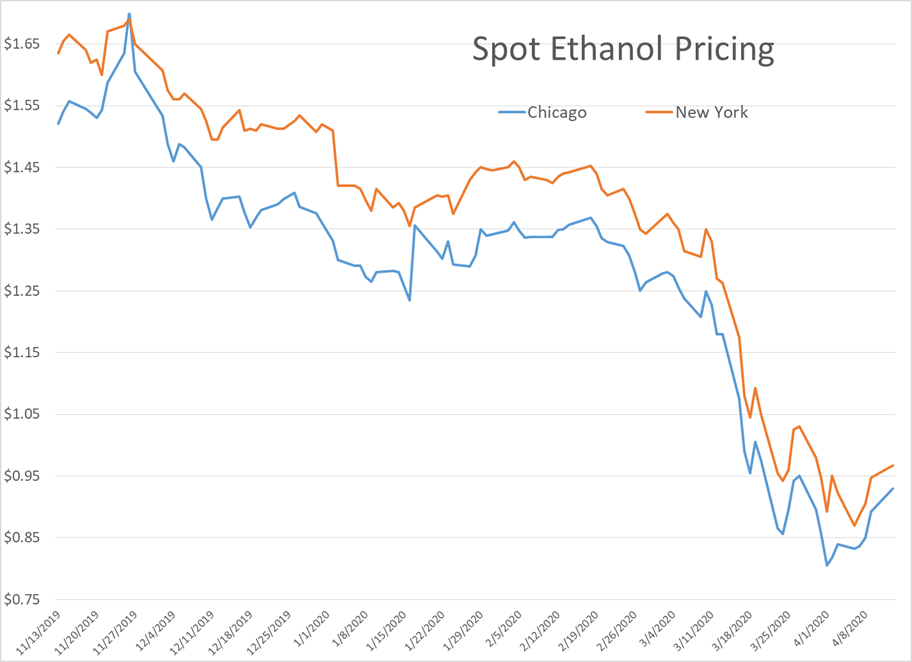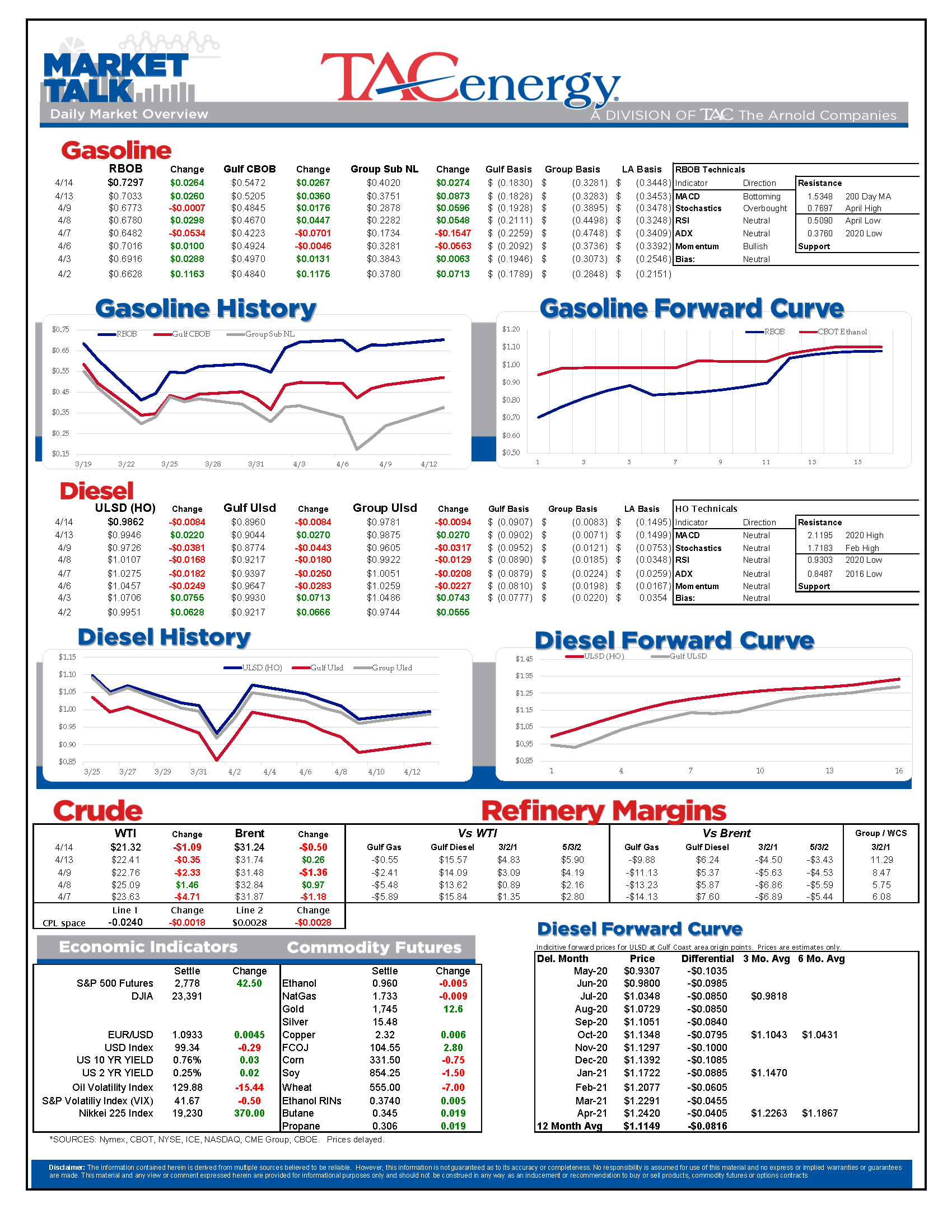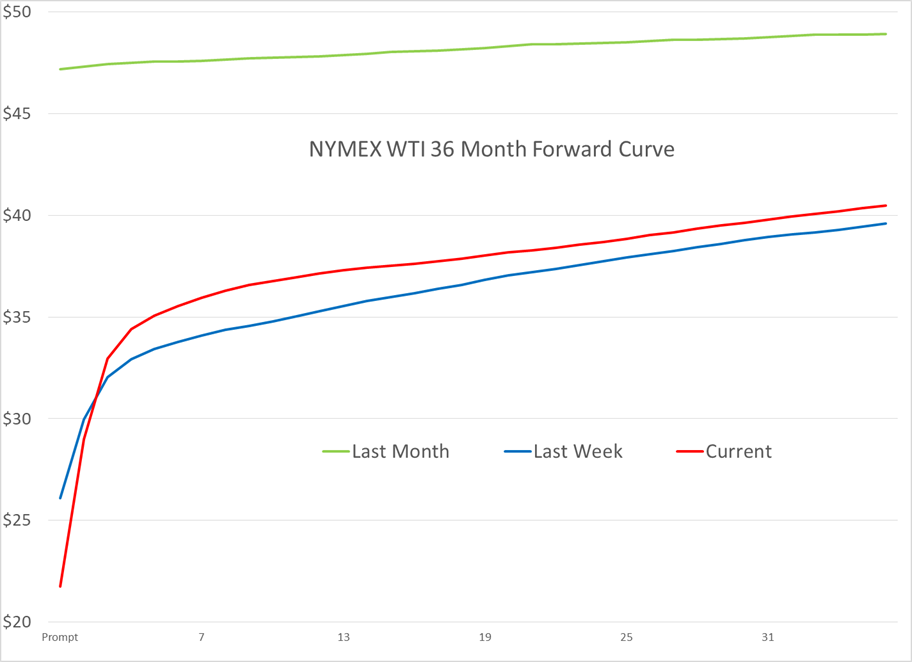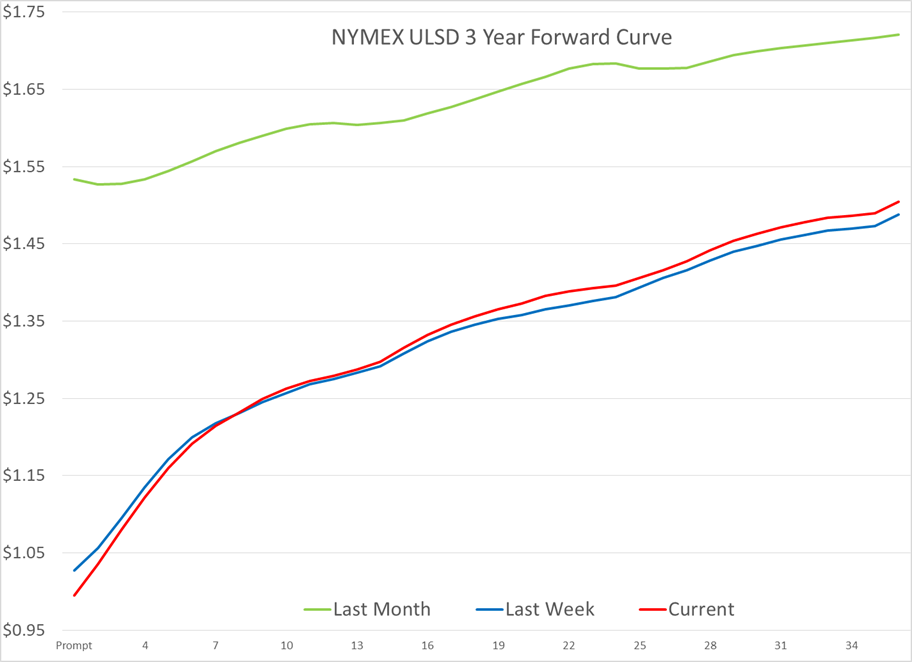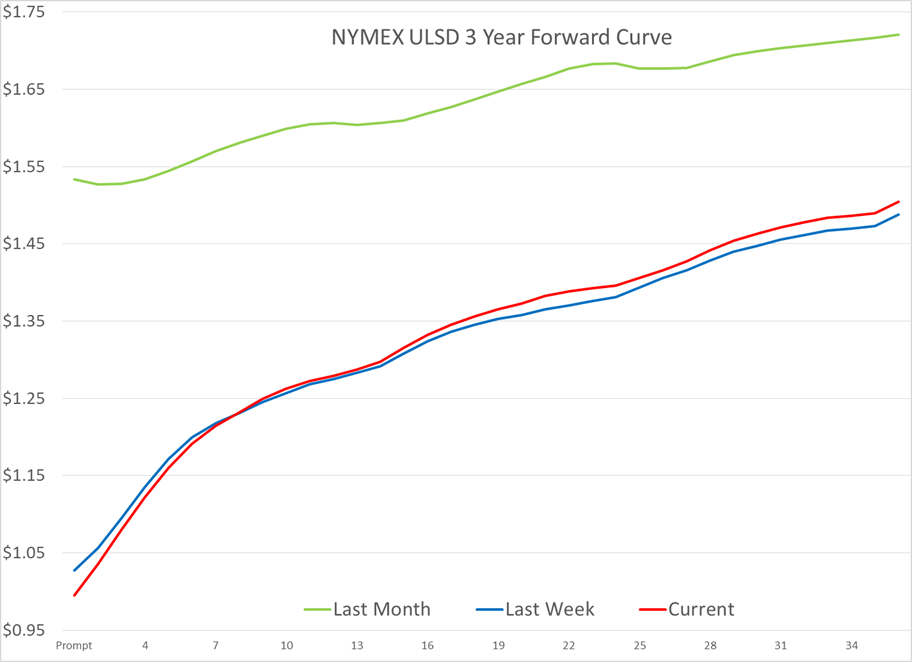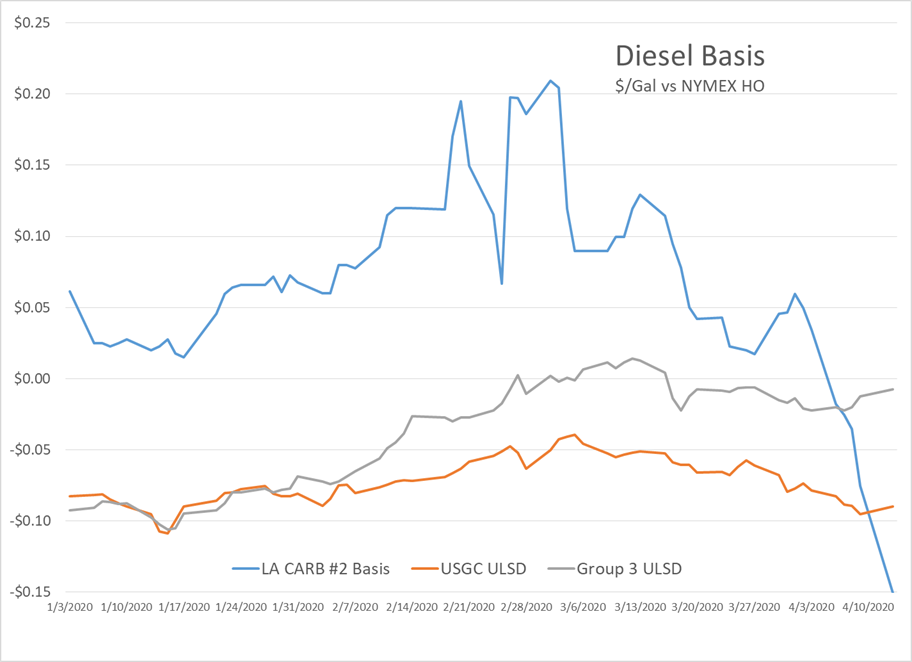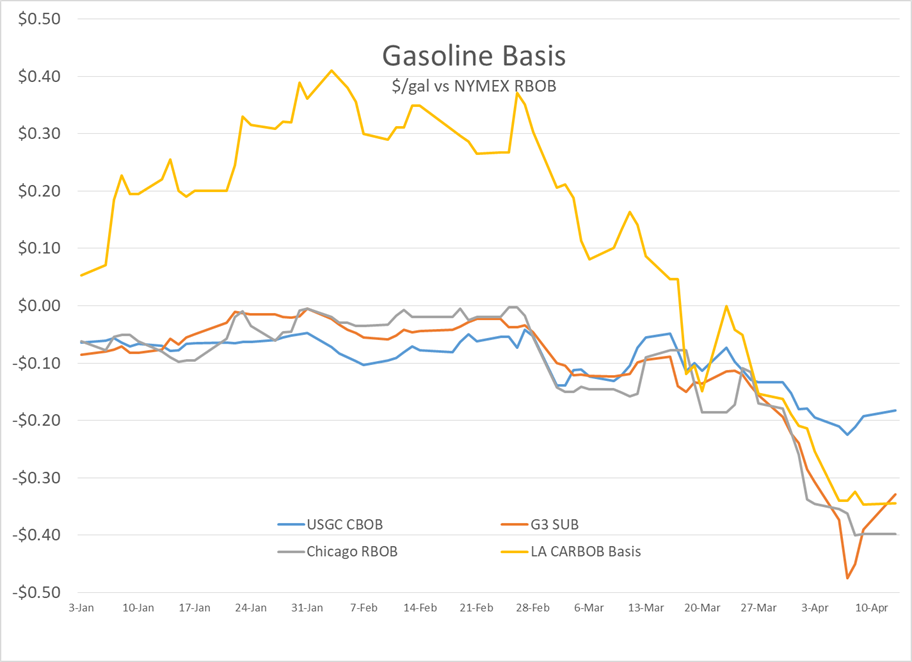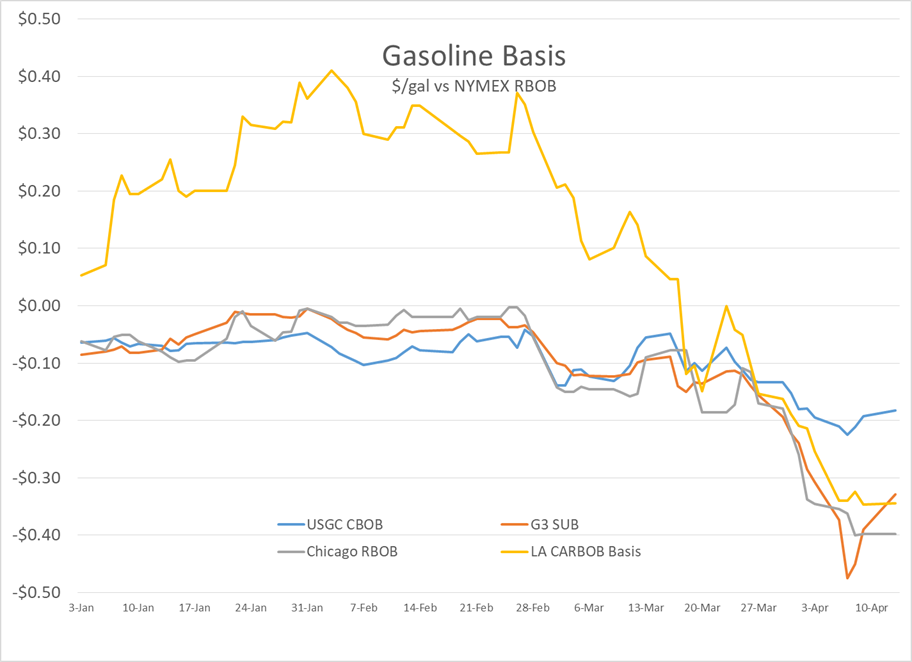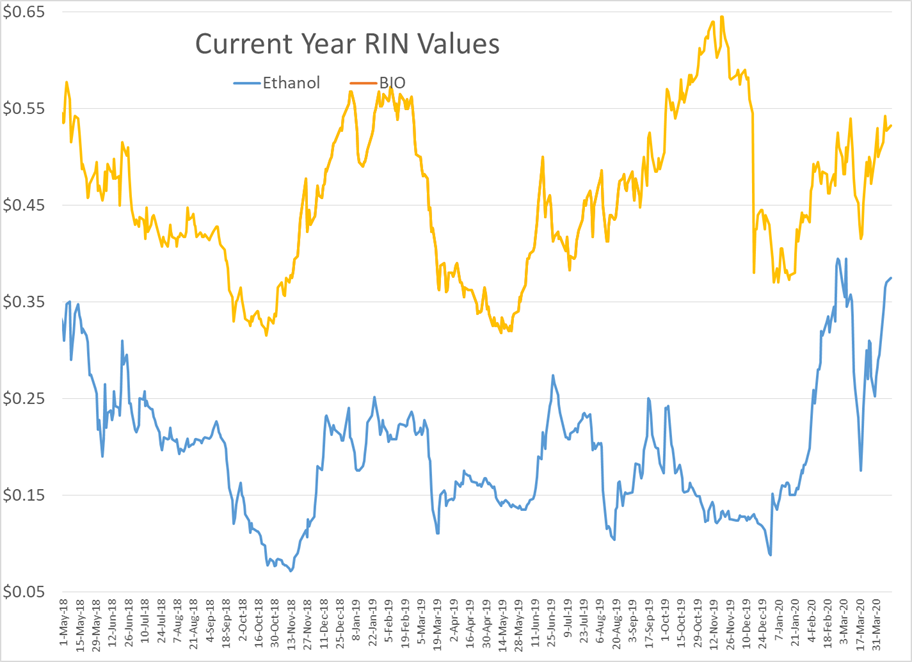Battle Of The Forward Curve Breaks Out

Just as the oil price war was supposed to be ending, a battle of the forward curve has broken out as buyers are bidding up prices three months to three years in the future, while sellers continue to struggle to find a home for prompt supplies. Reports that Saudi Arabia is offering further discounts in Asian markets for May deliveries is the latest sign of a market running out of space to store its product.
Nowhere is the impact on the forward curve more evident than in WTI, where prompt values are down more than four dollars/barrel (16 percent) from a week ago, but three months and forward are all higher now than they were before the OPEC agreement. This is the market appearing to signal that while these unprecedented cuts will eventually balance the market, there’s not much of a solution in the short term until the stay at home orders come to an end.
A similar phenomenon is playing out in physical markets for refined products around the country, as it seems each day a new record is broken for discounts being sold to the futures contracts. Monday it was west coast diesel values that came under heavy pressure, with L.A. & San Francisco CARB diesel priced 15 cents below futures, finding themselves in the unusual position of being the cheapest diesel in the country.
The divergence between futures and physical prices continues to be most pronounced in gasoline. Three of the five largest spot markets hold discounts of 30 cents/gallon or more, as refiners and shippers struggle to adjust to the collapse in demand. RBOB futures continue to advance despite the negative signals in the physical market, currently trading at nearly twice the value they were at their March lows. There are some technical warning signals flashing for RBOB futures, as the contract now is overbought on some short-term indicators. If they can’t break above $0.77 this week, there’s a good chance we could see another wave of selling to end the month.
Ethanol and their associated RINs are also continuing to sustain a rally this week as shuttered production facilities are expected to ease a record inventory overhang in the U.S.
Click here to download a PDF of today's TACenergy Market Talk.
News & Views
View All
Energy Futures Are Caught Up In Headline Tug-O-War This Morning
Energy futures are caught up in headline tug-o-war this morning with Canadian oil production concerns and a positive US GDP report trying to push prices higher while sinking Chinese demand worries and Gaza ceasefire hopes are applying downward pressure. The latter two seem to be favored more so far this morning with WTI and Brent crude oil futures down ~45 cents per barrel, while gasoline and diesel prices are down about half a cent and two cents, respectively.
No news is good news? Chicago gasoline prices dropped nearly 30 cents yesterday, despite there not being any update on Exxon’s Joliet refinery after further damage was discovered Wednesday. Its tough to say if traders have realized the supply situation isn’t as bad as originally thought or if this historically volatile market is just being itself (aka ‘Chicago being Chicago’).
The rain isn’t letting up along the Texas Gulf Coast today and is forecasted to carry on through the weekend. While much of the greater Houston area is under flood watch, only two refineries are within the (more serious) flood warning area: Marathon’s Galveston Bay and Valero’s Texas City refineries. However, notification that more work is needed at Phillip’s 66 Borger refinery (up in the panhandle) is the only filing we’ve seen come through the TECQ, so far.
Premiums over the tariff on Colonial’s Line 1 (aka linespace value) returned to zero yesterday, and actually traded in the negatives, after its extended run of positive values atypical of this time of year. Line 1’s counterpart, Line 2, which carries distillates from Houston to Greensboro NC, has traded at a discount so far this year, due to the healthy, if not over-, supply of diesel along the eastern seaboard.
Click here to download a PDF of today's TACenergy Market Talk.

WTI And Brent Crude Oil Futures Are Trading ~$1.50 Per Barrel Lower In Pre-Market Trading
The across-the-board drawdown in national energy stockpiles, as reported by the Department of Energy yesterday, stoked bullish sentiment Wednesday and prompt month gasoline, diesel, and crude oil futures published gains on the day. Those gains are being given back this morning.
The surprise rate cut by the People’s Bank of China is being blamed for the selling we are seeing in energy markets this morning. While the interest rate drop in both short- and medium-term loans won’t likely affect energy prices outright, the concern lies in the overall economic health of the world’s second largest economy and crude oil consumer. Prompt month WTI and Brent crude oil futures are trading ~$1.50 per barrel lower in pre-market trading, gasoline and diesel are following suit, shaving off .0400-.0450 per gallon.
Chicagoland RBOB has maintained its 60-cent premium over New York prices through this morning and shows no sign of coming down any time soon. Quite the opposite in fact: the storm damage, which knocked Exxon Mobil’s Joliet refinery offline on 7/15, seems to be more extensive than initially thought, potentially extending the repair time and pushing back the expected return date.
There are three main refineries that feed the Chicago market, the impact from one of them shutting down abruptly can be seen in the charts derived from aforementioned data published by the DOE. Refinery throughput in PADD 2 dropped 183,000 barrels per day, driving gasoline stockpiles in the area down to a new 5-year seasonal low.
While it seems all is quiet on the Atlantic front (for now), America’s Refineryland is forecasted to receive non-stop rain and thunderstorms for the next four days. While it may not be as dramatic as a hurricane, flooding and power outages can shut down refineries, and cities for that matter, all the same, as we learned from Beryl.

